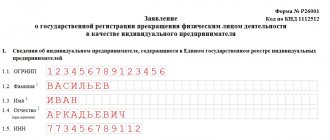What is tax charged on?
On profit, that is, on the difference between income and expenses.
Income is revenue from the main activity (income from sales), as well as amounts received from other activities. For example, from leasing property, interest on bank deposits, etc. (non-operating income). When taxing profits, all income is taken into account without VAT and excise taxes.
Expenses are justified and documented expenses of the enterprise. They are divided into costs associated with production and sales (employee wages, purchase price of raw materials, depreciation of fixed assets, etc.) and non-operating costs (negative exchange rate differences, court and arbitration fees, etc.). In addition, there is a closed list of expenses that cannot be taken into account when taxing profits. These are, in particular, accrued dividends, contributions to the authorized capital, loan repayments, etc.
During tax audits, most problems arise precisely because of expenses: inspectors declare that expenses are not economically justified, primary documents are drawn up incorrectly, etc., etc. Therefore, accountants, as a rule, pay increased attention to documents confirming expenses.
Options for calculating advances based on profit
Advance payments on profit during the tax period (for profit it is equal to a year, clause 1 of Article 285 of the Tax Code of the Russian Federation) the vast majority of payers of this tax have to (if, of course, an appropriate base arises) be calculated and paid repeatedly. In terms of frequency, calculations and payments are either quarterly or monthly (clause 2 of Article 286 of the Tax Code of the Russian Federation), which depends on the length of the reporting period chosen by the payer (clause 2 of Article 285 of the Tax Code of the Russian Federation).
Quarterly advances can be paid in two ways:
- once at the end of the next quarter (clause 3 of Article 286 of the Tax Code of the Russian Federation). This is available to legal entities with small (up to 15 million rubles per quarter) income, budgetary and autonomous institutions, non-profit organizations, foreign organizations, participants in simple and investment partnerships, production sharing agreements and beneficiaries under trust management agreements;
- in three equal monthly installments during the quarter following the next reporting period, with the amounts paid in this way offset in the final settlement at the end of the quarter in which these advances were paid (clause 2 of Article 286 of the Tax Code of the Russian Federation).
Monthly calculated advances and advances paid once at the end of the next quarter are characterized by one common feature: both are payments from the actual profit received. Only in the first case, the tax base is determined monthly, and in the second - quarterly. With this calculation, an additional amount is paid corresponding to the actual additional accruals for the last month or quarter.
For monthly payments based on actual profits, the income tax advance for the 4th quarter of 2021 will be calculated three times:
- in October - based on the results of 9 months,
- in November - based on the results of 10 months,
- in December - based on the results of 11 months.
The final tax calculation at the end of 12 months (i.e., the tax period), which will take into account changes in profit for the entire 4th quarter, will occur in 2021.
Of the quarterly income tax advances paid in fact, only one calculation (payment) will be made for the 4th quarter of 2021 - based on the final data accumulated over 9 months. Accordingly, all profit data for the 4th quarter of 2021 will be generated only at the end of the year, i.e. they will be included in the last report for 2021 already in 2021.
At what point to recognize income and expenses when calculating income tax?
There are two ways to recognize income and expenses: the accrual method and the cash method.
The accrual method provides that income and expenses are generally recorded in the period in which they arise, regardless of the actual receipt or payment of money. For example: an organization under a contract must pay office rent for August no later than August 31, but the rent payment is transferred only in October. Under the accrual method, the accountant must record this amount as an expense in August rather than in October.
Under the cash method, income is generally recognized when money is received in the current account or cash register, and expenses are recognized when the organization pays off its obligation to the supplier. So, if office rent for August was actually paid in October, then using the cash method, the accountant will show expenses in October, and not in August.
The organization has the right to choose which of the two methods - accrual or cash - it will use. But there is a limitation: any enterprise can use the accrual method, and banks are prohibited from using the cash method. In addition, in order to switch to the cash method, the following condition must be met: sales revenue excluding VAT on average for the previous four quarters cannot exceed one million rubles for each quarter. The same limit must be maintained during the time when the company uses the cash method. If the maximum revenue is exceeded, the organization is obliged to switch to the accrual method from the beginning of the current year. The chosen method is fixed in the accounting policy for the corresponding year and is applied during this year.
Get a sample accounting policy and do accounting in a web service for small LLCs and individual entrepreneurs Get it for free
Questions and answers
- Will there be penalties for not making an advance payment of income tax?
Answer: In this case, no fine will be charged.
- Why must the monthly advance payment for October be paid by October 29, 2021, and for November by November 28, 2021?
Answer: The deadline for submitting a tax return and paying the monthly advance is no later than 28 calendar days from the end of the corresponding reporting period. If the deadline for paying a tax or submitting a tax return falls on a weekend or holiday, the deadline for fulfilling obligations is postponed to the next business day.
How to calculate income tax
You need to determine the tax base (that is, the profit subject to tax) and multiply it by the appropriate tax rate. For profits subject to different rates, the bases are determined separately.
The tax base is calculated on an accrual basis from the beginning of the tax period, which corresponds to one calendar year. In other words, the base is determined during the period from January 1 to December 31 of the current year, then the calculation of the tax base begins from scratch.
If at the end of the year it turns out that expenses exceeded income and the company incurred losses, then the tax base is considered equal to zero. This means that the amount of income tax cannot be negative; the amount of tax must be either zero or positive.
The correctness of the calculation of the base must be confirmed by entries in the tax registers. Each enterprise develops these registers independently and consolidates them in its accounting tax policy. In practice, tax accounting registers are similar to accounting registers. Two types of accounting - tax and accounting - are needed to reflect the different rules for the formation of income and expenses that apply respectively in tax and accounting. In some cases, “tax” and “accounting” profits may coincide (see “Instructions for the new edition of PBU 18/02 “Accounting for corporate income tax calculations”, which must be applied from 2021”).
Check the counterparty for the accuracy of information in the Unified State Register of Legal Entities and signs of a shell company
Tax and reporting periods
The tax period for the simplified tax system is the calendar year from January 1 to December 31 (Article 346.19 of the Tax Code of the Russian Federation).
That is, the company or entrepreneur needs to pay the tax and report it after the end of the year, when the actual tax base for calculating the single tax is known. However, during the year, at the end of each reporting period, the company is obliged to transfer advance tax payments to the budget. The reporting periods for the single tax are the first quarter, half a year, nine months.
Despite the obligation to make quarterly advance payments, there is no need to submit interim reports to the simplified people.
Declarations must be submitted regardless of whether the company or entrepreneur has a single tax base or not. This obligation is not conditioned by the presence of the amount of tax to be paid, but by the provisions of the law on this type of tax. And until the “simplified” person notifies the tax authorities of the refusal to apply the simplified tax system, this obligation will not be canceled (letter of the Ministry of Finance of Russia dated July 8, 2013 No. 03-11-11/26247).
Read about the tax and reporting periods of “simplified people” in the “STS in practice” berator
How to calculate advance payments for income tax
During the year, the accountant must calculate advance payments for income tax. There are two ways to calculate advance payments.
The first method is established for all organizations by default and provides that the reporting periods are the first quarter, half a year and nine months. Advance payments are made at the end of each reporting period. The payment amount based on the results of the first quarter is equal to the tax on profits received in the first quarter. The advance payment at the end of the half-year is equal to the tax on the profit received for the half-year, minus the advance payment for the first quarter. The amount of payment based on the results of nine months is equal to the tax on profit for nine months minus advance payments for the first quarter and half of the year.
Plus, monthly advance payments are made during each reporting period. At the end of the reporting period, the accountant withdraws the advance payment based on the results of this period (we have given the calculation rules above), and then compares it with the amount of monthly payments made within this period. If the total monthly payments are less than the final advance payment, the company must pay the difference. If there is an overpayment, the accountant will take it into account in future periods.
Monthly advance payments are calculated according to the following rules. In the first quarter, that is, January, February and March, the accountant calculates the same monthly advance payments as in October, November and December of the previous year. In the second quarter, the accountant takes tax on the profit actually received in the first quarter, and divides this figure by three. The result is the total of the monthly advance payments for April, May and June. In the third quarter, the accountant takes the tax from the actual profit for the six months, subtracts the advance payment of the first quarter, and divides the resulting figure by three. The amount of monthly advance payments for July, August and September comes out. In the fourth quarter, the accountant takes tax from the profit actually received for nine months, subtracts advance payments for six months, and divides the resulting value by three. These are advance payments for October, November and December.
The second way is based on actual profit. The company can adopt this method voluntarily. To do this, you need to notify the tax office no later than December 31 that during the next year the company will switch to calculating monthly advance payments based on the actual profit received. With this method, the reporting periods are one month, two months, three months, and so on until the end of the calendar year. The advance payment for January is equal to the tax on profits actually received in January. The advance payment for January-February is equal to the tax on profits actually received in January and February minus the advance payment for January. The advance payment for January-March is equal to the tax on profits actually received in January-March minus advance payments for January and February. And so on until December.
An organization that has previously chosen the second method of calculating advance payments (that is, based on actual profits) has the right to refuse it and return to the first method from the beginning of next year. To do this, you need to submit a corresponding application to the Federal Tax Service no later than December 31 of the current year. If you return to the first method, the advance payment for January-March will be equal to the difference between the advance payment for nine months and the advance payment for six months of the previous year.
Companies whose sales revenue excluding VAT during the four previous quarters did not exceed an average of 15 million rubles per quarter must accrue only quarterly advance payments. This rule, regardless of the amount of revenue, also applies to budgetary, non-profit and some other organizations.
Newly created organizations accrue not monthly, but quarterly advance payments until a full quarter has passed from the date of their state registration. Then the accountant must look at what the sales revenue is (excluding VAT). If it does not exceed 5 million rubles per month or 15 million rubles per quarter, the company can continue to accrue only quarterly advance payments. If the limit is exceeded, the company switches to monthly advance payments from the next month.
What types of advance payments are there?
Calculation of advance payments for income tax is divided into three types:
- Quarterly. It includes companies with revenues for four quarters not exceeding fifteen million each. The exception is the organizations listed in paragraph 3 of Article 286 of the Tax Code.
- Monthly taking into account real profits. It is paid by companies that have expressed a voluntary desire to make monthly advance payments of income tax. They must notify the tax authorities of the next period by December 31st. For example, to switch to this method next year, a company must submit an application no later than the target date of the current period.
- Monthly, calculated based on the results of the previous quarter, but with an additional payment based on the results of the current quarter. The obligations apply to all legal entities that do not meet the conditions of the first two paragraphs.
Newly created enterprises use the first type of accrual of advance payments for income tax. From the first quarter, they switch to the second method in accordance with paragraph 6 of Article 286 of the Tax Code if their income exceeds the established limits and allows them to pay only quarterly. The rule does not apply if the company’s management initially notified the Federal Tax Service and prefers to pay only according to actual profit.
Payment by quarters
Quarterly advance payments of income tax are mandatory for firms falling under the conditions of article 286. Payment deadlines for them are the first quarter, then half a year, nine months and the end of the year.
Such organizations include:
- government agencies;
- firms with an income of 15 million for each quarter or 60 million for the year;
- foreign enterprises operating in the country through permanent representatives;
- companies participating in partnerships in relation to income from their share of participation;
- investors of equity agreements according to their share of participation;
- beneficiaries under trust management contracts.
The obligations also apply to new businesses, but only until the end of the first quarter.
Monthly deductions with additional payment at the end of the quarter
Companies that do not have the right to pay only quarterly payments and do not want to switch to a calculation system based on actual income must calculate advance payments of income tax every month. Such organizations must make contributions every month to the tax amounts calculated based on the results of the previous quarterly period. After three months, a recalculation is made and the difference is reimbursed.
Newly formed enterprises, before paying income tax in advance payments in other ways, work according to this scheme. After three months, they have the right to deduct money only based on the profit received. The period is counted from the date of registration. The amount is calculated on an increasing basis.
When to transfer money to the budget
If the reporting periods are a quarter, half a year and nine months, then advance payments based on the results of the reporting periods are made no later than April 28, July 28 and October 28, respectively. The monthly advance payment for January should be transferred no later than January 28, for February - no later than February 28, and so on until December inclusive.
If the company makes advance payments based on actual profits, then the advance payment for January is made no later than February 28, for January-February - no later than March 28, and so on, until January 28 of the next year.
Regardless of the chosen method of calculating advance payments, at the end of the calendar year, the accountant displays the total amount of income tax for the past year. Then he compares it with the amount of advance payments accrued at the end of the reporting periods. If the total amount of advance payments is less than the final tax amount, the company pays the difference to the budget. If there is an overpayment, the accountant will take it into account in the following periods. The total amount of income tax must be paid no later than March 28 of the following year.
Automatically generate a tax payment invoice based on the data from the declaration and submit reports via the Internet
Consequences of late tax payment
If a company does not pay tax or an advance tax payment on time, it will have arrears. Then the inspectors will take measures to force the company to pay the budget.
One of these measures is the accrual of penalties. They are collected from the day following the deadline for payment of the tax until the date of its actual transfer, inclusive. In this case, penalties are charged for each day of delay based on 1/300 of the Bank of Russia refinancing rate.
EXAMPLEAn accountant of Aktiv LLC had to pay a single tax at the end of the year in the amount of 112,000 rubles. no later than March 31st. Let's assume that this day was a working day, so there was no official postponement of the tax payment deadline. The company paid the tax only on April 7. Therefore, penalties must be accrued from April 1 to April 7, that is, 7 calendar days. The refinancing rate of the Bank of Russia at that time was 10.5%. The amount of penalties will be equal to: RUB 112,000. × 10.5% × 1/300 × 7 days. = 274.4 rub.
If at the end of the year the amount of calculated tax turned out to be less than the amount of advance payments due during this year, then penalties accrued for non-payment of advance payments can be proportionately reduced. Moreover, this rule applies to “simplified” with any object of taxation (letter of the Federal Tax Service of Russia dated February 5, 2021 No. ZN-4-1 / [email protected] , Ministry of Finance of Russia dated August 16, 2013 No. 03-02-08/33518 , dated January 19, 2010 No. 03-03-06/1/9).
EXAMPLE An individual entrepreneur who does not have employees applies the simplified tax system with the object “income”. Advance payments for “simplified” tax based on the results of the reporting periods - the first quarter, half a year and 9 months - were accrued by the entrepreneur, but not paid. Let’s say the total amount of these payments was 60,000 rubles. At the end of the year, the amount of calculated tax was 75,000 rubles. Individual entrepreneurs reduced the amount of tax on fixed insurance contributions to the Pension Fund and the Federal Compulsory Medical Insurance Fund paid for themselves, that is, by 23,153.33 rubles. As a result, the amount of tax was less than the amount of advance payments calculated based on the results of the reporting periods and amounted to RUB 51,846.67. (RUB 75,000 – RUB 23,153.33) – RUB 12,961.67 (RUB 51,846.67: 12 months × 3 months) – due for payment on April 25 (for the first quarter); – 25,923.33 rub. (RUB 51,846.67: 12 months × 6 months) – due for payment on July 25 (for half a year); – 38,885 rub. (RUB 51,846.67: 12 months × 9 months) – due for payment on October 25 (for 9 months).
According to the Ministry of Finance, this procedure can also be applied to the payment of the minimum tax (letter dated October 30, 2015 No. 03-11-06/2/62714).
Financiers make this conclusion based on the resolution of the Plenum of the Supreme Arbitration Court of the Russian Federation dated July 30, 2013 No. 57. Thus, paragraph 14 of the resolution states that if, at the end of the tax period, the amount of calculated tax was less than the amount of advance payments, then the courts should proceed from the fact that penalties accrued for late payment of advance payments must be proportionately reduced.
Therefore, if, based on the results of the year, the “STS-man” must pay the minimum tax, and the amount of advance payments calculated at the end of each reporting period is greater than the amount of this tax, then penalties for non-payment (or late payment) of advances should be reduced proportionately, that is, in proportion the amount of the minimum tax.
What non-payment or untimely payment of the “simplified” tax entails, read in the “STS in practice” berator
How to report income taxes
Companies whose activities are completely transferred to one or more special tax regimes (simplified system or payment of a single agricultural tax) may not report income tax.
All other legal entities that have made at least one transaction involving the receipt or expenditure of cash or non-cash funds, regardless of whether they have income, must submit income tax declarations to the inspectorate based on the results of the reporting and tax periods.
The income tax return for the tax period (year) must be submitted to the inspectorate no later than March 28 of the following year. Non-profit organizations that do not have an obligation to pay tax submit a simplified form of declaration. All other enterprises, regardless of their obligation to pay tax, submit year-end declarations in full form.
Companies whose reporting periods are quarterly, half-yearly and nine months report in a simplified form no later than April 28, July 28 and October 28, respectively.
Organizations for which the reporting periods are one month, two months, and so on, report in a simplified form no later than February 28, March 28, and so on until January 28 of the following year.
When is it necessary to pay income tax for the 4th quarter of 2021?
Income tax payers are required to pay tax in the following order:
| Period | Tax payments | Payment deadline |
| In the 4th quarter | Quarterly advance | October 29, 2021 (October 28, 2010 – day off) |
| Monthly advance (including quarterly surcharge) |
|
Payment of income tax for the 4th quarter of 2021 (more precisely for 2021) must be made before March 28, 2021.







